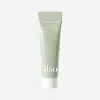What's inside
What's inside
 Key Ingredients
Key Ingredients

 Benefits
Benefits

 Concerns
Concerns

 Ingredients Side-by-side
Ingredients Side-by-side

Water
Skin ConditioningKaolin
AbrasiveGlycerin
HumectantCaprylic/Capric Triglyceride
MaskingHectorite
Absorbent1,2-Hexanediol
Skin ConditioningGlyceryl Stearate Se
EmulsifyingSorbitan Olivate
EmulsifyingCetearyl Olivate
Cetyl Alcohol
EmollientPhoenix Dactylifera Fruit Extract
EmollientFicus Carica Fruit Extract
HumectantPortulaca Oleracea Extract
Skin ConditioningSodium Hyaluronate
HumectantCeramide NP
Skin ConditioningEthylhexylglycerin
Skin ConditioningPyrus Communis Fruit Extract
Skin ConditioningSodium Acrylate/Sodium Acryloyldimethyl Taurate Copolymer
Emulsion StabilisingHedera Helix Leaf/Stem Extract
AntimicrobialPolyisobutene
Butylene Glycol
HumectantOpuntia Ficus-Indica Stem Extract
Skin ConditioningOpuntia Coccinellifera Fruit Extract
Skin ConditioningFragaria Chiloensis Fruit Extract
Skin ConditioningPyrus Malus Leaf Extract
Skin ConditioningAdansonia Digitata Seed Extract
Skin ConditioningSorbitan Oleate
EmulsifyingCaprylyl/Capryl Glucoside
CleansingCrithmum Maritimum Callus Culture Filtrate
Skin ProtectingCentella Asiatica Extract
CleansingWater, Kaolin, Glycerin, Caprylic/Capric Triglyceride, Hectorite, 1,2-Hexanediol, Glyceryl Stearate Se, Sorbitan Olivate, Cetearyl Olivate, Cetyl Alcohol, Phoenix Dactylifera Fruit Extract, Ficus Carica Fruit Extract, Portulaca Oleracea Extract, Sodium Hyaluronate, Ceramide NP, Ethylhexylglycerin, Pyrus Communis Fruit Extract, Sodium Acrylate/Sodium Acryloyldimethyl Taurate Copolymer, Hedera Helix Leaf/Stem Extract, Polyisobutene, Butylene Glycol, Opuntia Ficus-Indica Stem Extract, Opuntia Coccinellifera Fruit Extract, Fragaria Chiloensis Fruit Extract, Pyrus Malus Leaf Extract, Adansonia Digitata Seed Extract, Sorbitan Oleate, Caprylyl/Capryl Glucoside, Crithmum Maritimum Callus Culture Filtrate, Centella Asiatica Extract
 Reviews
Reviews

Ingredients Explained
These ingredients are found in both products.
Ingredients higher up in an ingredient list are typically present in a larger amount.
This ingredient is an emollient, solvent, and texture enhancer. It is considered a skin-softener by helping the skin prevent moisture loss.
It helps thicken a product's formula and makes it easier to spread by dissolving clumping compounds.
Caprylic Triglyceride is made by combining glycerin with coconut oil, forming a clear liquid.
While there is an assumption Caprylic Triglyceride can clog pores due to it being derived from coconut oil, there is no research supporting this.
Learn more about Caprylic/Capric TriglycerideGlycerin is already naturally found in your skin. It helps moisturize and protect your skin.
A study from 2016 found glycerin to be more effective as a humectant than AHAs and hyaluronic acid.
As a humectant, it helps the skin stay hydrated by pulling moisture to your skin. The low molecular weight of glycerin allows it to pull moisture into the deeper layers of your skin.
Hydrated skin improves your skin barrier; Your skin barrier helps protect against irritants and bacteria.
Glycerin has also been found to have antimicrobial and antiviral properties. Due to these properties, glycerin is often used in wound and burn treatments.
In cosmetics, glycerin is usually derived from plants such as soybean or palm. However, it can also be sourced from animals, such as tallow or animal fat.
This ingredient is organic, colorless, odorless, and non-toxic.
Glycerin is the name for this ingredient in American English. British English uses Glycerol/Glycerine.
Learn more about GlycerinWater. It's the most common cosmetic ingredient of all. You'll usually see it at the top of ingredient lists, meaning that it makes up the largest part of the product.
So why is it so popular? Water most often acts as a solvent - this means that it helps dissolve other ingredients into the formulation.
You'll also recognize water as that liquid we all need to stay alive. If you see this, drink a glass of water. Stay hydrated!
Learn more about Water